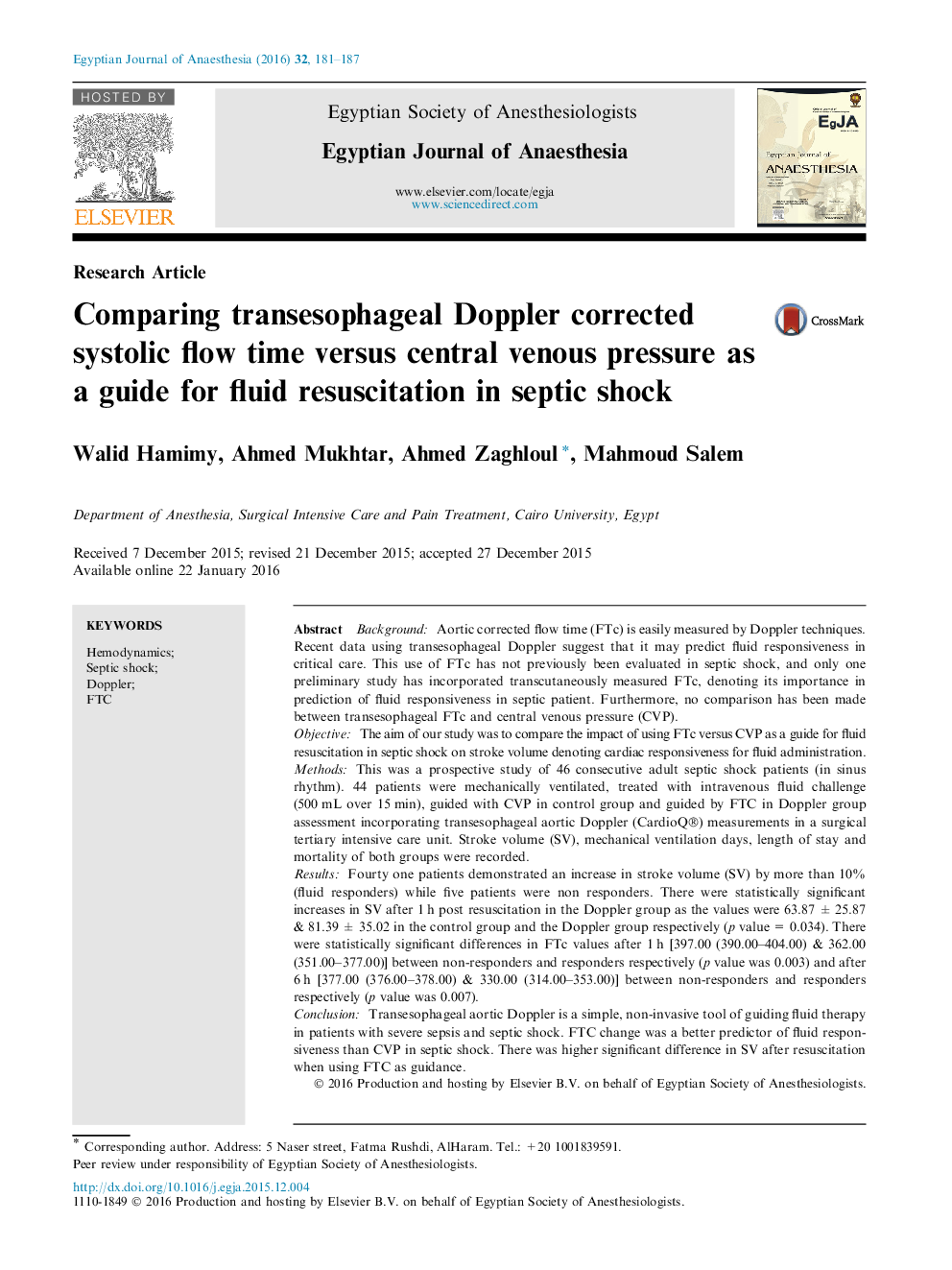| کد مقاله | کد نشریه | سال انتشار | مقاله انگلیسی | نسخه تمام متن |
|---|---|---|---|---|
| 2756146 | 1567409 | 2016 | 7 صفحه PDF | دانلود رایگان |
BackgroundAortic corrected flow time (FTc) is easily measured by Doppler techniques. Recent data using transesophageal Doppler suggest that it may predict fluid responsiveness in critical care. This use of FTc has not previously been evaluated in septic shock, and only one preliminary study has incorporated transcutaneously measured FTc, denoting its importance in prediction of fluid responsiveness in septic patient. Furthermore, no comparison has been made between transesophageal FTc and central venous pressure (CVP).ObjectiveThe aim of our study was to compare the impact of using FTc versus CVP as a guide for fluid resuscitation in septic shock on stroke volume denoting cardiac responsiveness for fluid administration.MethodsThis was a prospective study of 46 consecutive adult septic shock patients (in sinus rhythm). 44 patients were mechanically ventilated, treated with intravenous fluid challenge (500 mL over 15 min), guided with CVP in control group and guided by FTC in Doppler group assessment incorporating transesophageal aortic Doppler (CardioQ®) measurements in a surgical tertiary intensive care unit. Stroke volume (SV), mechanical ventilation days, length of stay and mortality of both groups were recorded.ResultsFourty one patients demonstrated an increase in stroke volume (SV) by more than 10% (fluid responders) while five patients were non responders. There were statistically significant increases in SV after 1 h post resuscitation in the Doppler group as the values were 63.87 ± 25.87 & 81.39 ± 35.02 in the control group and the Doppler group respectively (p value = 0.034). There were statistically significant differences in FTc values after 1 h [397.00 (390.00–404.00) & 362.00 (351.00–377.00)] between non-responders and responders respectively (p value was 0.003) and after 6 h [377.00 (376.00–378.00) & 330.00 (314.00–353.00)] between non-responders and responders respectively (p value was 0.007).ConclusionTransesophageal aortic Doppler is a simple, non-invasive tool of guiding fluid therapy in patients with severe sepsis and septic shock. FTC change was a better predictor of fluid responsiveness than CVP in septic shock. There was higher significant difference in SV after resuscitation when using FTC as guidance.
Journal: Egyptian Journal of Anaesthesia - Volume 32, Issue 2, April 2016, Pages 181–187
